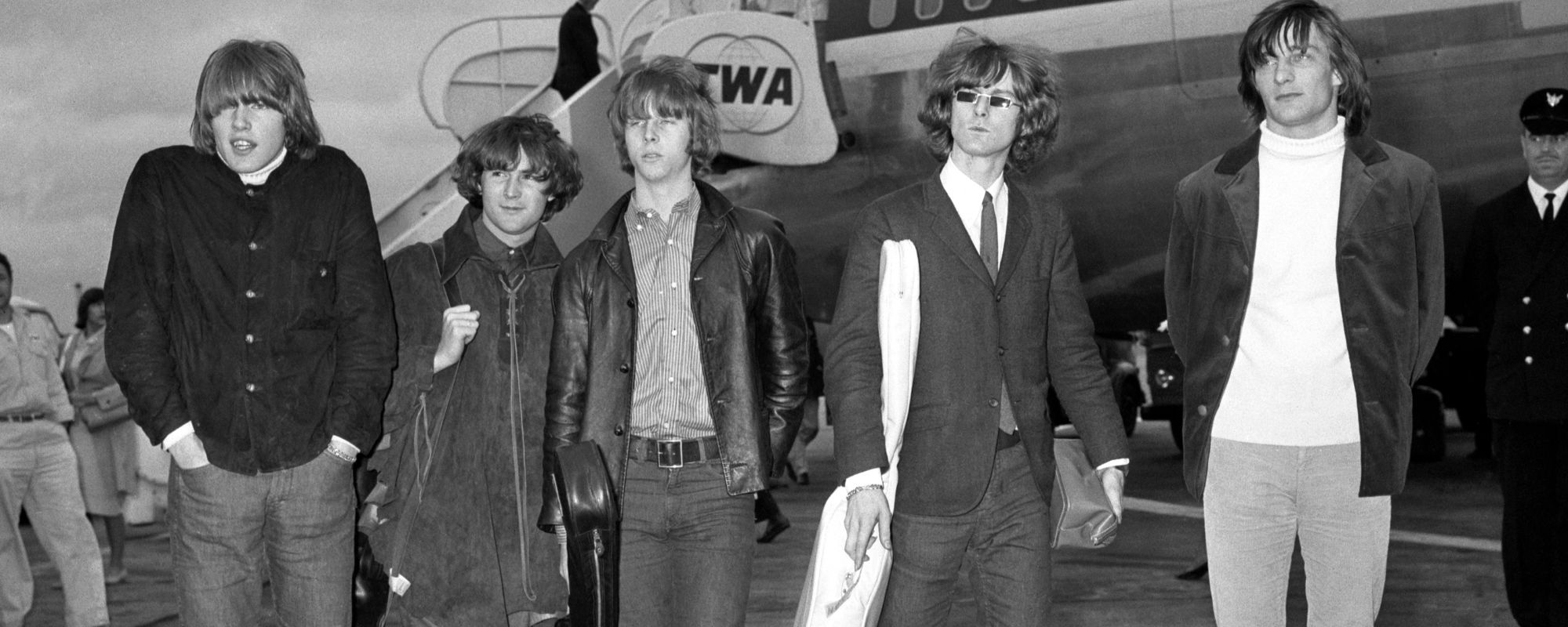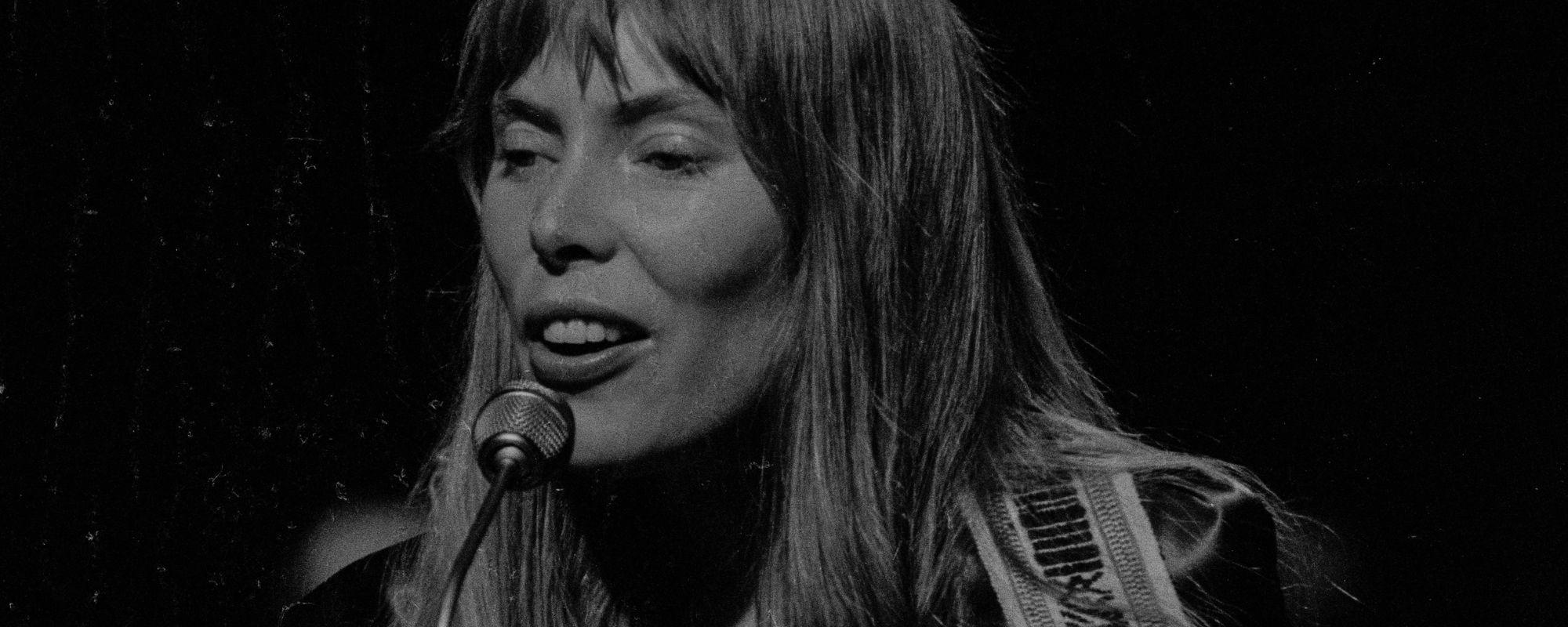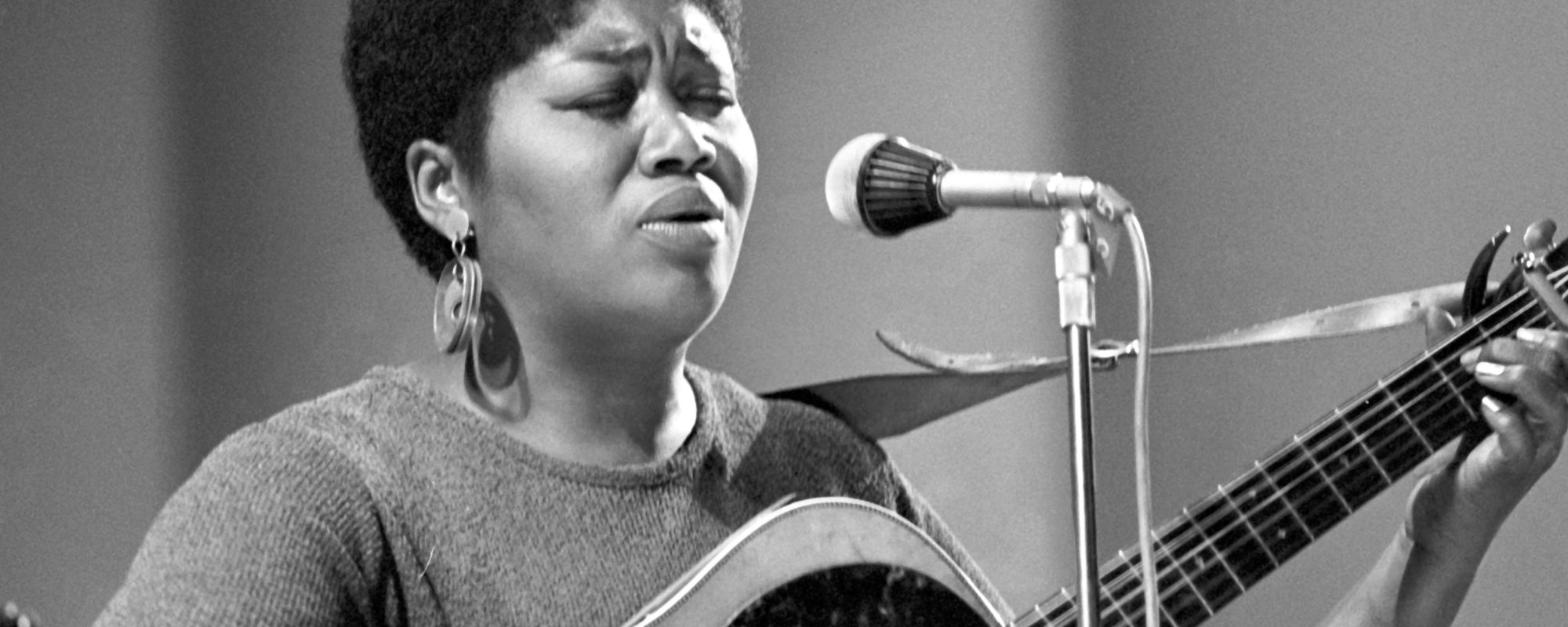One of the first times Neil Young and Joni Mitchell ever crossed paths, Mitchell walked away with a seed of inspiration for what would become one of her most well-known and oft-covered songs. A testament to the fact that an artist can never really be sure what a listener might take away from one of their songs, Mitchell’s inspiration came from a new song of Young’s that he showed her during their mid-1960s encounter: “Sugar Mountain.”
Videos by American Songwriter
For a then-20-year-old Young, his song was an ode to his lost youth. For Mitchell, his song was a reminder that perspective is everything.
The Joni Mitchell Song Neil Young Helped Inspire
When Joni Mitchell ran into Neil Young at a Canadian folk club around 1965, the latter artist was in a particularly dark place. A freshly turned 20-year-old Young was struggling to reconcile with growing older, having just aged out of one of his favorite rock clubs in Manitoba, which only allowed teens. “Sugar Mountain” was his way of processing the passing of time and the dissonance between spending your childhood wishing you were older, only to reach adulthood and realize it wasn’t all it was cracked up to be. Oh, to live on Sugar Mountain, with the barkers and the colored balloons. You can’t be 20 on Sugar Mountain, though you’re thinking that you’re leaving there too soon.
After another musician told Young the song had potential, he decided to play it for Mitchell when they met up while she was passing through Winnipeg. During a 1968 performance at Gerdes Folk City, Mitchell described her encounter with Young.
“He’d just turned 20 years old and was very, very depressed because he said, ‘You know, all my life, I’ve been looking forward to being an adult. You know everything, everything that I wanted to do, they kept saying, ‘Well, lookit, wait, kid. You know, wait til you’re older.’ Suddenly, here I am, and I’m older, and I can do just about all those things except I can’t go into the pubs ‘til next year. But I can do just about anything I want to, and you know what? I wanna go out and play skipping rope and play jacks and all that stuff that I missed and left behind.’ He was really depressed. So, I wrote a song for him.” The song Mitchell came up with was “The Circle Game.”
Two Sides Of The Same Coin
Two years after her Gerdes Folk City appearance, Joni Mitchell was performing at the Paris Theater in London with James Taylor when she arrived at “The Circle Game” in her set. She played back the same conversation she had with a woeful Neil Young roughly five years earlier, adding that after she heard “Sugar Mountain,” “I thought, ‘God, you know, if we get to 21, and there’s nothing after that, you know, that’s a pretty bleak future.” She said her musical response was not only a way to soothe Young’s fears about getting older but also to provide her with some hope for herself.
Both songs explore opposite sides of the same coin. Whereas Young laments his lost youth, Mitchell explores the possibilities that the passing of time has to offer. The years spin by, and now the boy is twenty, Mitchell sings in the final verse, directly referencing her distraught friend. Though his dreams have lost some grandeur coming true, there’ll be new dreams, maybe better dreams and plenty before the last revolving year is through.
Young used “Sugar Mountain” as a B-side in the late 1960s before finally releasing it on his 1977 compilation album, Decade. Mitchell first released “The Circle Game” on her 1970 album Ladies of the Canyon. However, covers by Ian & Silvia, Buffy Sainte-Marie, and Tom Rush came out years earlier, cementing the track as one of Mitchell’s most covered songs.
Photo by Larry Hulst/Michael Ochs Archives/Getty Images













Leave a Reply
Only members can comment. Become a member. Already a member? Log in.